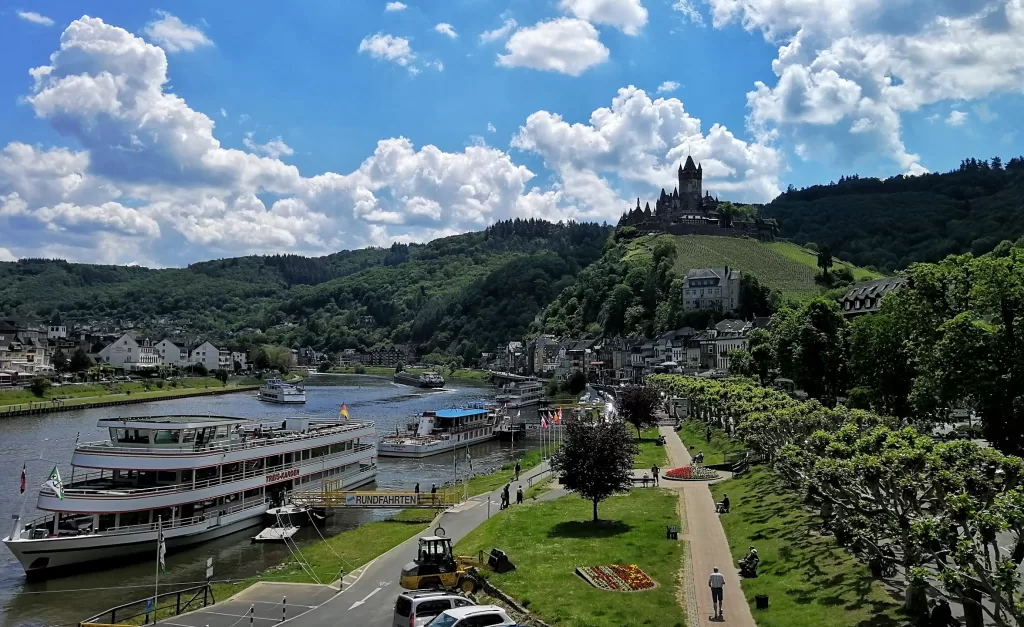 As part of my exploration of German castles, I traveled to Cochem, drawn by the magnetism of the Reichsburg. Nestled in the Mosel River valley, Cochem shares a similarity with Frankfurt in its lines of Plane trees on the riverbanks. The Reichsburg Cochem, perched on a vineyard-covered hill at the town’s edge, is a sight to enjoy. Originating from the 12th century, and having undergone destruction and reconstruction, this castle once served as a watchtower over the Mosel River and has now been transformed into a public museum.
As part of my exploration of German castles, I traveled to Cochem, drawn by the magnetism of the Reichsburg. Nestled in the Mosel River valley, Cochem shares a similarity with Frankfurt in its lines of Plane trees on the riverbanks. The Reichsburg Cochem, perched on a vineyard-covered hill at the town’s edge, is a sight to enjoy. Originating from the 12th century, and having undergone destruction and reconstruction, this castle once served as a watchtower over the Mosel River and has now been transformed into a public museum.
Best time to visit: From late Spring to early Autumn
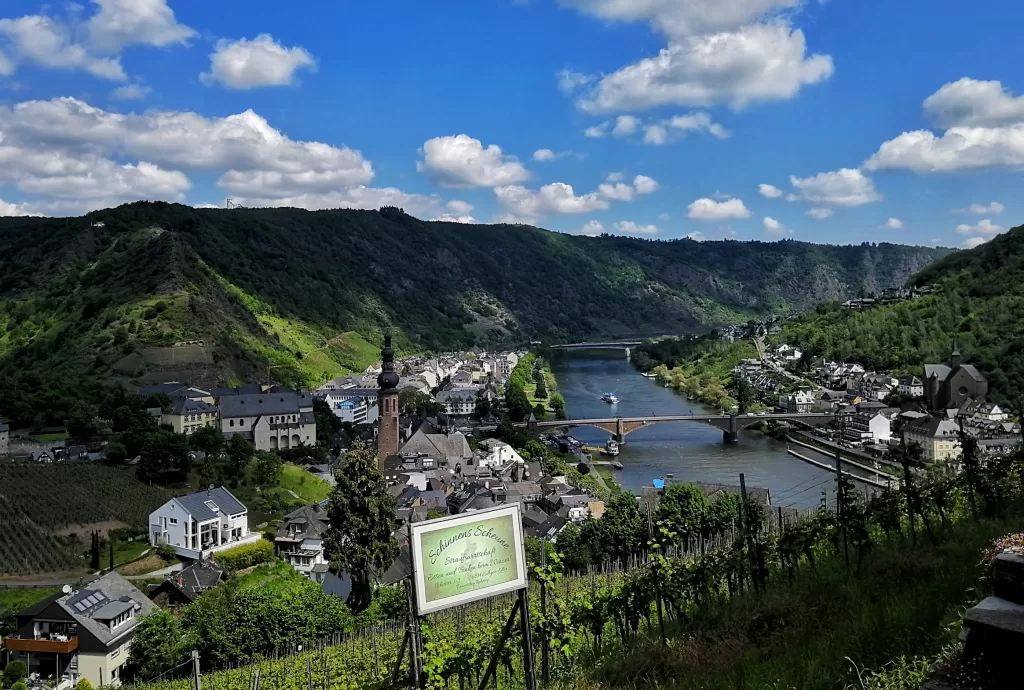 Reaching Cochem isn’t straightforward, as it lies off the main city routes. Typically, one must travel to Koblenz and then take a Regional Bahn (regional train) to Cochem.
Reaching Cochem isn’t straightforward, as it lies off the main city routes. Typically, one must travel to Koblenz and then take a Regional Bahn (regional train) to Cochem.
The walk to Reichsburg Cochem is simple navigation – just head towards it. There’s a slight uphill walk, but it’s manageable and quite pleasant, especially with the vineyards lining the path. This region is known for wine-growing, particularly Riesling.
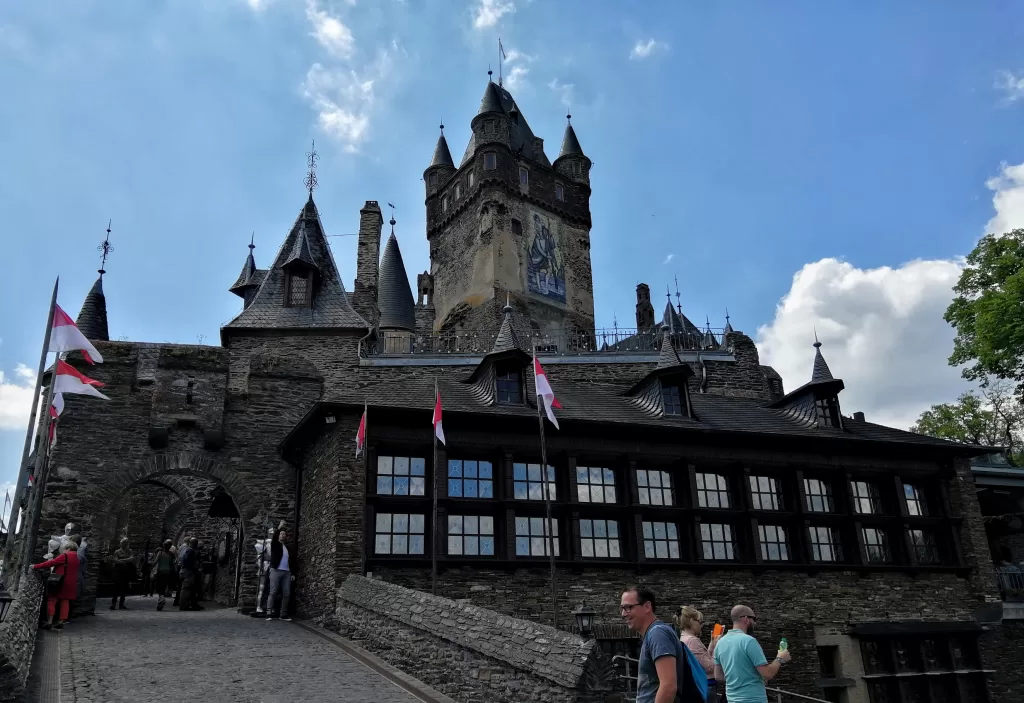 The guided tours at Reichsburg Cochem are affordable, but checking opening hours is necessary. During my visit, tickets were available at the entrance. Interestingly, photography is allowed inside the castle, although flash photography was prohibited – an uncommon rule on castle tours.
The guided tours at Reichsburg Cochem are affordable, but checking opening hours is necessary. During my visit, tickets were available at the entrance. Interestingly, photography is allowed inside the castle, although flash photography was prohibited – an uncommon rule on castle tours.
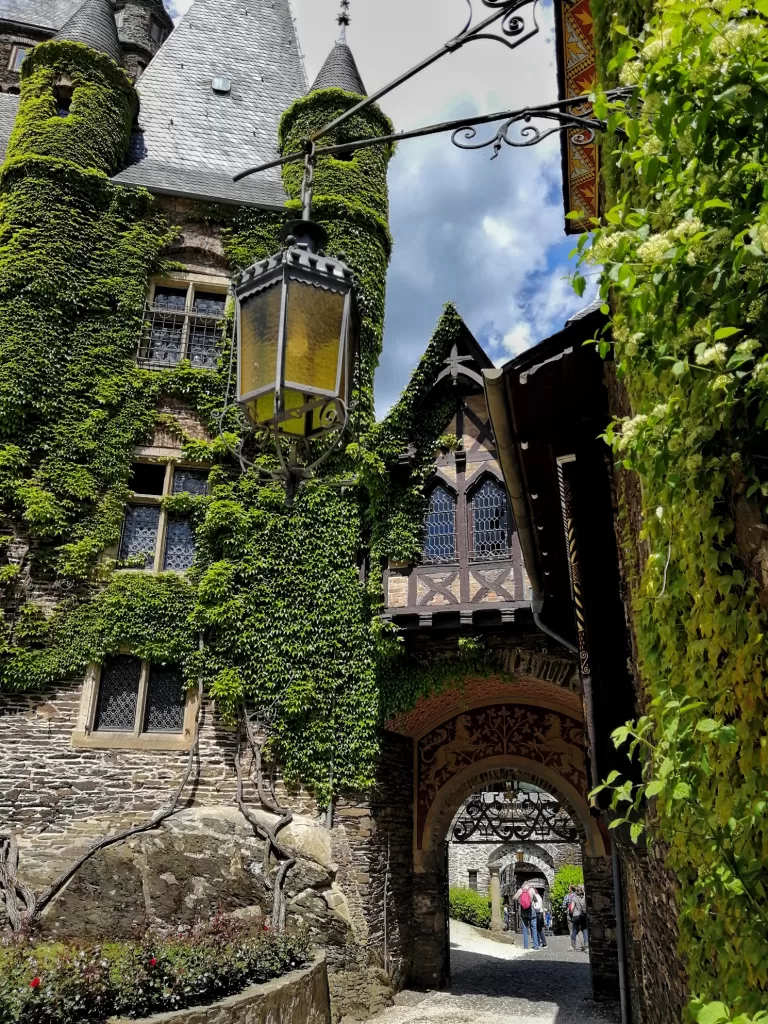 The castle’s interior reflects the eccentricities of a former lord obsessed with symmetry, to the extent of including fake doors to maintain the balance. The large balcony served as a strategic lookout over the river, but it also offers a beautiful yet relaxing view of the town. The castle even has chambers that were supposedly used to detain witches – a reminder of the absurd superstitions of the medieval era.
The castle’s interior reflects the eccentricities of a former lord obsessed with symmetry, to the extent of including fake doors to maintain the balance. The large balcony served as a strategic lookout over the river, but it also offers a beautiful yet relaxing view of the town. The castle even has chambers that were supposedly used to detain witches – a reminder of the absurd superstitions of the medieval era.
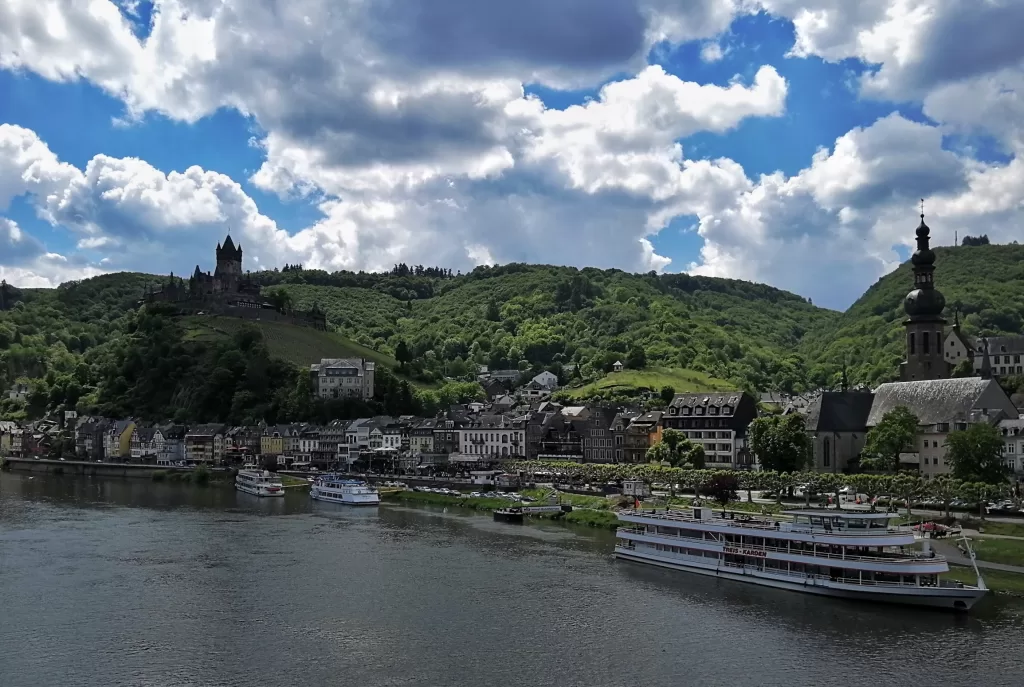 The town of Cochem itself is charming, with its main road lined with Plane trees, riverbank parks, and an array of restaurants and cafes. The Fachwerkhäuser (Half-timbered houses) along the river add to its picturesque quality. But what truly captivated me were the narrow alleys with quaint bakeries and flower shops – evidence to the undervalued romantic side of Germany.
The town of Cochem itself is charming, with its main road lined with Plane trees, riverbank parks, and an array of restaurants and cafes. The Fachwerkhäuser (Half-timbered houses) along the river add to its picturesque quality. But what truly captivated me were the narrow alleys with quaint bakeries and flower shops – evidence to the undervalued romantic side of Germany.
My visit to Reichsburg Cochem and its charming little town was a delightful immersion into history and local charm. From the strategic vantage point of the castle to the cozy alleys of Cochem, every aspect resonated with a sense of past tales and present beauty.
Reichsburg Cochem: History, Vineyards, and Medieval Lore

As part of my exploration of German castles, I traveled to Cochem, drawn by the magnetism of the Reichsburg. Nestled in the Mosel River valley, Cochem shares a similarity with Frankfurt in its lines of Plane trees on the riverbanks. The Reichsburg Cochem, perched on a vineyard-covered hill at the town’s edge, is a sight to enjoy. Originating from the 12th century, and having undergone destruction and reconstruction, this castle once served as a watchtower over the Mosel River and has now been transformed into a public museum.
Best time to visit: From late Spring to early Autumn
Reaching Cochem isn’t straightforward, as it lies off the main city routes. Typically, one must travel to Koblenz and then take a Regional Bahn (regional train) to Cochem.

The walk to Reichsburg Cochem is simple navigation – just head towards it. There’s a slight uphill walk, but it’s manageable and quite pleasant, especially with the vineyards lining the path. This region is known for wine-growing, particularly Riesling.

The guided tours at Reichsburg Cochem are affordable, but checking opening hours is necessary. During my visit, tickets were available at the entrance. Interestingly, photography is allowed inside the castle, although flash photography was prohibited – an uncommon rule on castle tours.
The castle’s interior reflects the eccentricities of a former lord obsessed with symmetry, to the extent of including fake doors to maintain the balance. The large balcony served as a strategic lookout over the river, but it also offers a beautiful yet relaxing view of the town. The castle even has chambers that were supposedly used to detain witches – a reminder of the absurd superstitions of the medieval era.
The town of Cochem itself is charming, with its main road lined with Plane trees, riverbank parks, and an array of restaurants and cafes. The Fachwerkhäuser (Half-timbered houses) along the river add to its picturesque quality. But what truly captivated me were the narrow alleys with quaint bakeries and flower shops – evidence to the undervalued romantic side of Germany.
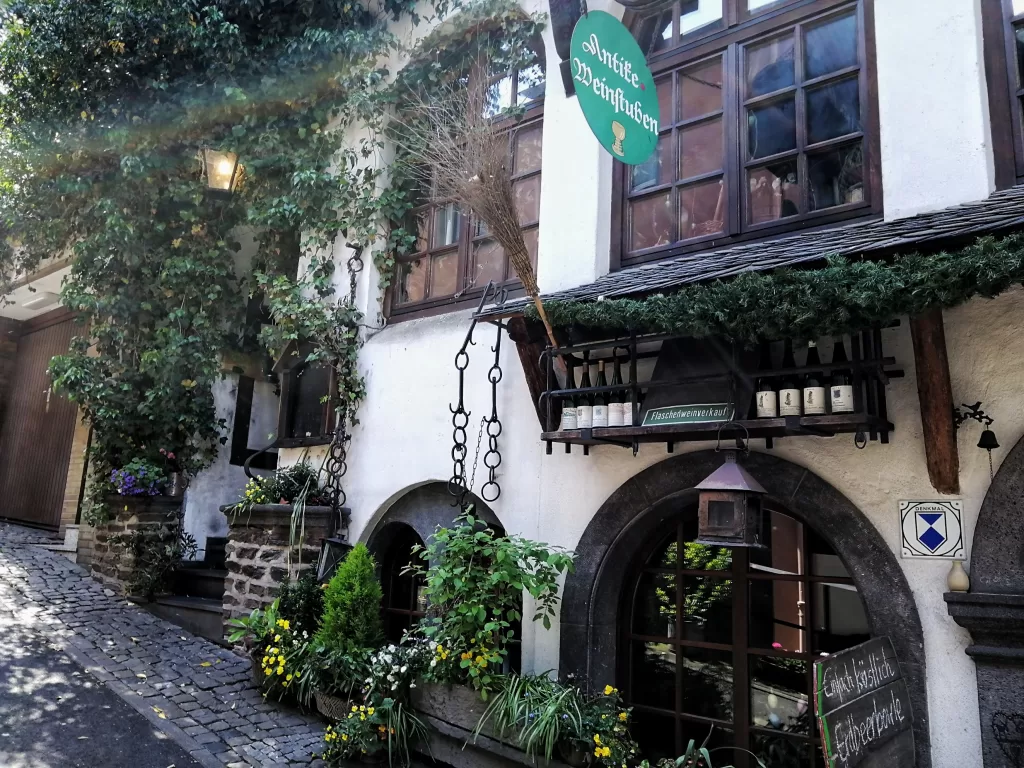
My visit to Reichsburg Cochem and its charming little town was a delightful immersion into history and local charm. From the strategic vantage point of the castle to the cozy alleys of Cochem, every aspect resonated with a sense of past tales and present beauty.